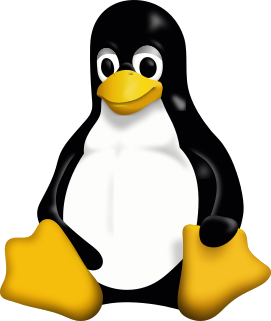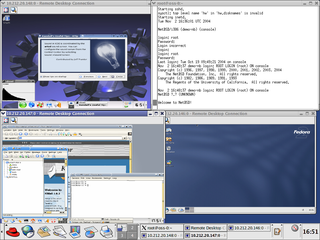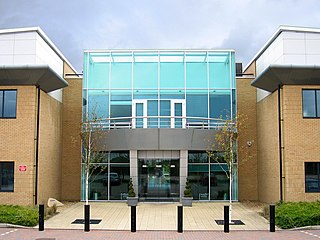Products
Trango developed a mobile hypervisor that supported ARM architectures (ARMv5 and ARMv6) and MIPS architectures, and could run Symbian OS, WinCE, and Linux mobile operating systems, and a supporting integrated development environment (IDE).
ARM, previously Advanced RISC Machine, originally Acorn RISC Machine, is a family of reduced instruction set computing (RISC) architectures for computer processors, configured for various environments. Arm Holdings develops the architecture and licenses it to other companies, who design their own products that implement one of those architectures—including systems-on-chips (SoC) and systems-on-modules (SoM) that incorporate memory, interfaces, radios, etc. It also designs cores that implement this instruction set and licenses these designs to a number of companies that incorporate those core designs into their own products.
MIPS is a reduced instruction set computer (RISC) instruction set architecture (ISA) developed by MIPS Computer Systems.

Linux is a family of free and open-source software operating systems based on the Linux kernel, an operating system kernel first released on September 17, 1991 by Linus Torvalds. Linux is typically packaged in a Linux distribution.
VMware rebranded Trango's product as the VMware Mobile Virtualization Platform, which was later renamed VMware Horizon Mobile. [2] [3]
This page is based on this
Wikipedia article Text is available under the
CC BY-SA 4.0 license; additional terms may apply.
Images, videos and audio are available under their respective licenses.

Xen Project is a type-1 hypervisor, providing services that allow multiple computer operating systems to execute on the same computer hardware concurrently. It was
developed by the University of Cambridge and is now being developed by the Linux Foundation with support from Intel.
In computing, para-virtualization is a virtualization technique that presents a software interface to the virtual machines which is similar, yet not identical to the underlying hardware–software interface.
Platform virtualization software, specifically emulators and hypervisors, are software packages that emulate the whole physical computer machine, often providing multiple virtual machines on one physical platform. The table below compares basic information about platform virtualization hypervisors.
Desktop virtualization is software technology that separates the desktop environment and associated application software from the physical client device that is used to access it.

VMware ESXi is an enterprise-class, type-1 hypervisor developed by VMware for deploying and serving virtual computers. As a type-1 hypervisor, ESXi is not a software application that is installed on an operating system (OS); instead, it includes and integrates vital OS components, such as a kernel.
Hardware virtualization is the virtualization of computers as complete hardware platforms, certain logical abstractions of their componentry, or only the functionality required to run various operating systems. Virtualization hides the physical characteristics of a computing platform from the users, presenting instead an abstract computing platform. At its origins, the software that controlled virtualization was called a "control program", but the terms "hypervisor" or "virtual machine monitor" became preferred over time.
Open Virtualization Format (OVF) is an open standard for packaging and distributing virtual appliances or, more generally, software to be run in virtual machines.
VMware Horizon View is a commercial desktop virtualization product developed by VMware, Inc for Microsoft Windows, Linux and Mac OS X Operating Systems. Its was first sold under the name VMware VDM, but with the release of version 3.0.0 in 2008 it was changed to "VMware View", changing again to "Horizon View" with the launch of version 6 in April 2014.

Arm Holdings is a British multinational semiconductor and software design company, owned by SoftBank Group and its Vision Fund. With its headquarters in Cambridgeshire, within the United Kingdom, its primary business is in the design of ARM processors (CPUs), although it also designs software development tools under the DS-5, RealView and Keil brands, as well as systems and platforms, system-on-a-chip (SoC) infrastructure and software. As a "Holding" company, it also holds shares of other companies. It is considered to be market dominant for processors in mobile phones and tablet computers. The company is one of the best-known "Silicon Fen" companies.

libvirt is an open-source API, daemon and management tool for managing platform virtualization. It can be used to manage KVM, Xen, VMware ESXi, QEMU and other virtualization technologies. These APIs are widely used in the orchestration layer of hypervisors in the development of a cloud-based solution.
Second Level Address Translation (SLAT), also known as nested paging, is a hardware-assisted virtualization technology which makes it possible to avoid the overhead associated with software-managed shadow page tables.
Virsto develops a VM-centric storage hypervisor. The company is privately funded and headquartered in Sunnyvale, California. On February 11, 2013, VMware announced that it had signed a definitive agreement to acquire Virsto.
Software-defined storage (SDS) is a marketing term for computer data storage software for policy-based provisioning and management of data storage independent of the underlying hardware. Software-defined storage typically includes a form of storage virtualization to separate the storage hardware from the software that manages it. The software enabling a software-defined storage environment may also provide policy management for features such as data deduplication, replication, thin provisioning, snapshots and backup.
OVPsim is a multiprocessor platform emulator used to run unchanged production binaries of the target hardware. OVPsim uses dynamic binary translation technology to achieve high simulation speeds. It has public APIs allowing users to create their own processor, peripheral and platform models. Various models are available as open source. OVPsim is a key component of the Open Virtual Platforms initiative (OVP), an organization created to promote the use of open virtual platforms for embedded software development. OVPSim requires OVP registration to download.






